Step into the captivating embrace of nature, where the beauty of the world unfolds in its purest form, and the wonders of the outdoors await. As parents, we have the power to ignite our children’s passion for the natural world and create lifelong bonds that will shape their relationship with the environment. Through simple yet enriching nature activities, we can embark on a journey of discovery alongside our children, weaving enduring threads of connection with nature.
Today, Ohio homeschooling mom of four, Leslie Alvis, is here sharing seven simple nature activities that we can use to unlock the boundless curiosity within our kids’ hearts, nurturing a deep love for the Earth and fostering profound bonds with the natural world. From the thrill of nature collecting to the mystery of deciphering animal tracks, from the excitement of scavenger hunts to the knowledge gained through field guides, these activities offer invaluable opportunities for learning and exploration. Join us as we delve into each of these activities (and more!), unraveling their potential to create lifelong bonds with nature and empower our children to become stewards of the earth.
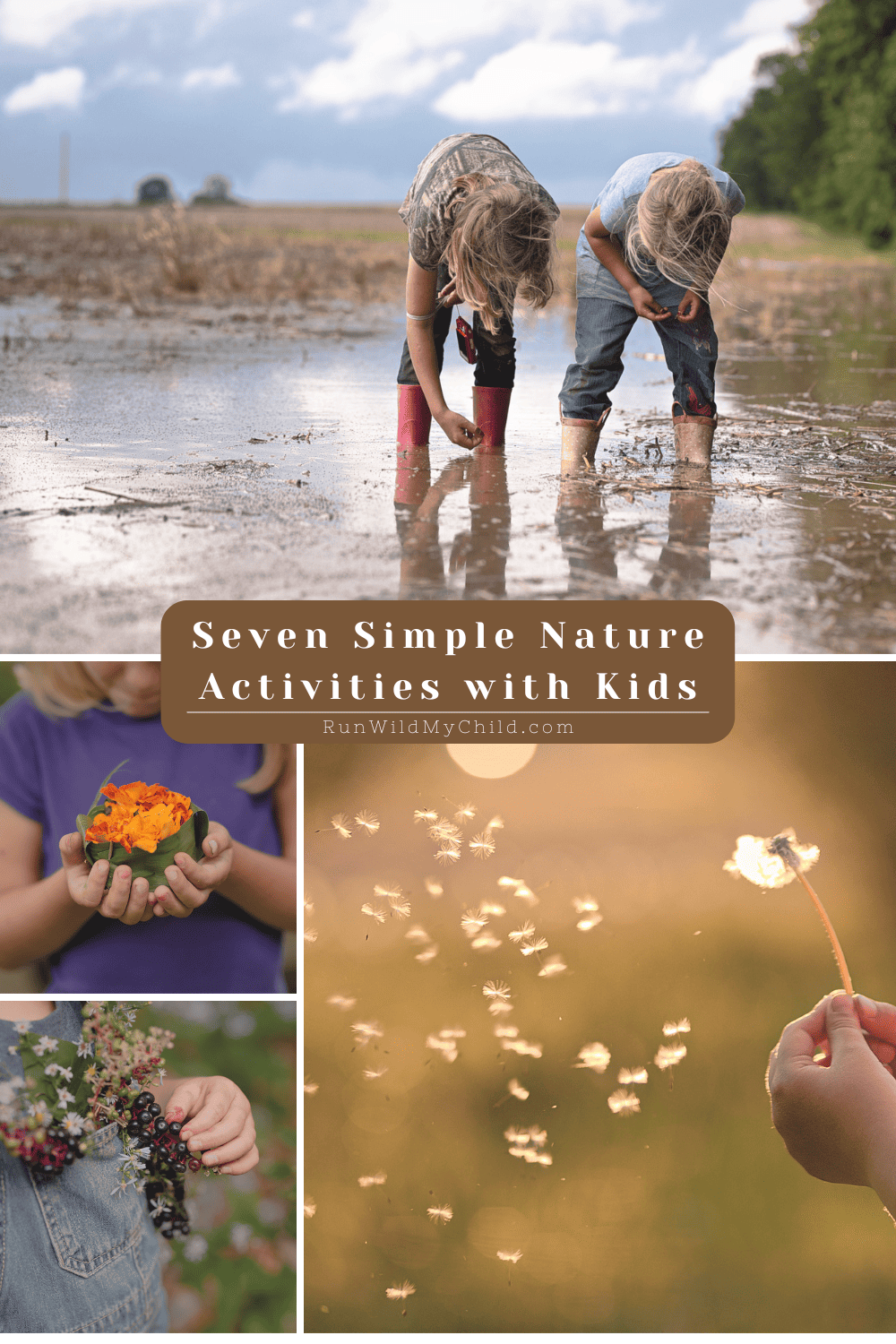
Simple nature activities that inspire a love for the outdoors
Nature and children go together with a beautiful synergy. Filled with wonder and energy, they simply belong together. Nature never fails to awe, entertain, and inspire bright, curious minds. I believe that children need regular nature time as an essential part of a rich childhood.
Surrounded by nature’s beauty and rhythms, kids learn to appreciate and understand the natural world around them. Many times, all children need is time outside to be creative and make up their own nature activities. But if you’re needing a starting place, or just some fresh inspiration for getting your kids involved in nature, these simple outdoor nature activities are a great way to keep your kids engaged, learning, and enjoying nature!
7 simple nature activities for kids
- Nature collecting
- Finding animals tracks
- Nature scavenger hunt
- Using guidebooks & field guides to learn about nature
- Sensory activities
- Imaginary play
- Nature sit spotting
These seven simple yet powerful nature activities can help us create lifelong bonds between our children and the great outdoors. From the thrill of nature collecting to the serenity of nature sit spotting, from the excitement of scavenger hunts to the enriching learning with field guides, each activity holds its own unique magic.
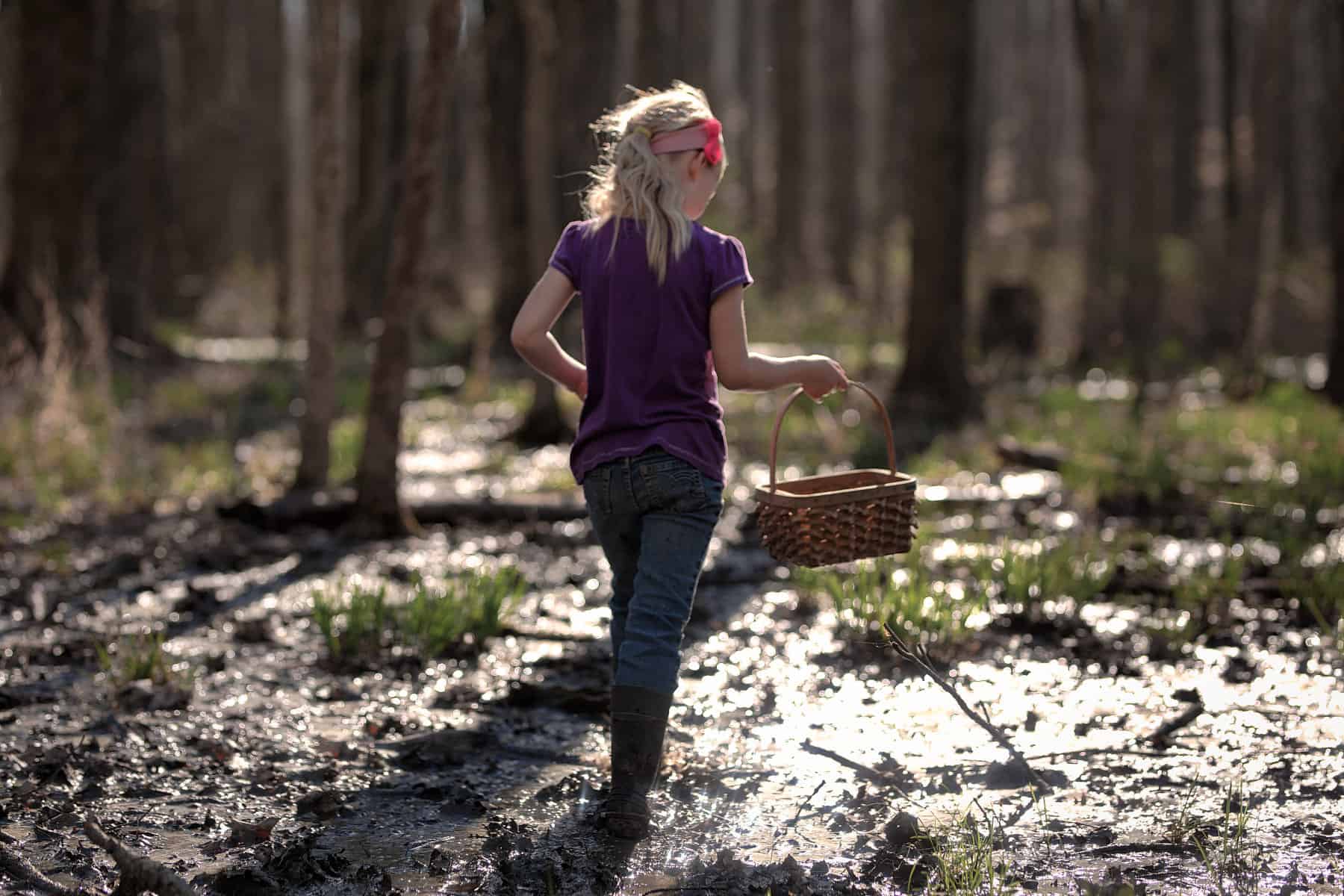
1. Nature collecting
Nature collecting never fails to interest and entertain kids. The idea is simple—take a basket or bucket, and get outside to see what you can gather from the natural world. Kids love collecting bits of nature—from rocks and sticks, leaves and nuts, to flowers and discarded insect exoskeletons (or even bleached animal bones!). Nature offers something for everyone.
The child who is drawn to beauty will find marvels wherever he or she looks. The child who delights in the unusual will find strange and wondrous things. So, when you take the time to slow down and intentionally look for nature specimens, your child can safely collect and study. It brings so much fun and wonder to a very basic walk.
A word about nature collection
There are places you can collect nature specimens, and there are places where you can’t. This activity works great, even just in your own backyard. But, it’s important to teach your kids that what may be appropriate in your backyard may not be okay in a public place—or even someone else’s yard.
Some areas, like nature preserves, are intended to be enjoyed without touching or taking any part of nature. In other places, like a public park, it might be okay to pick up fallen nuts or leaves, but not to pick flowers. And then you may have access to places, like private property or woods, where your child can gather all kinds of bits of nature with the owner’s permission.
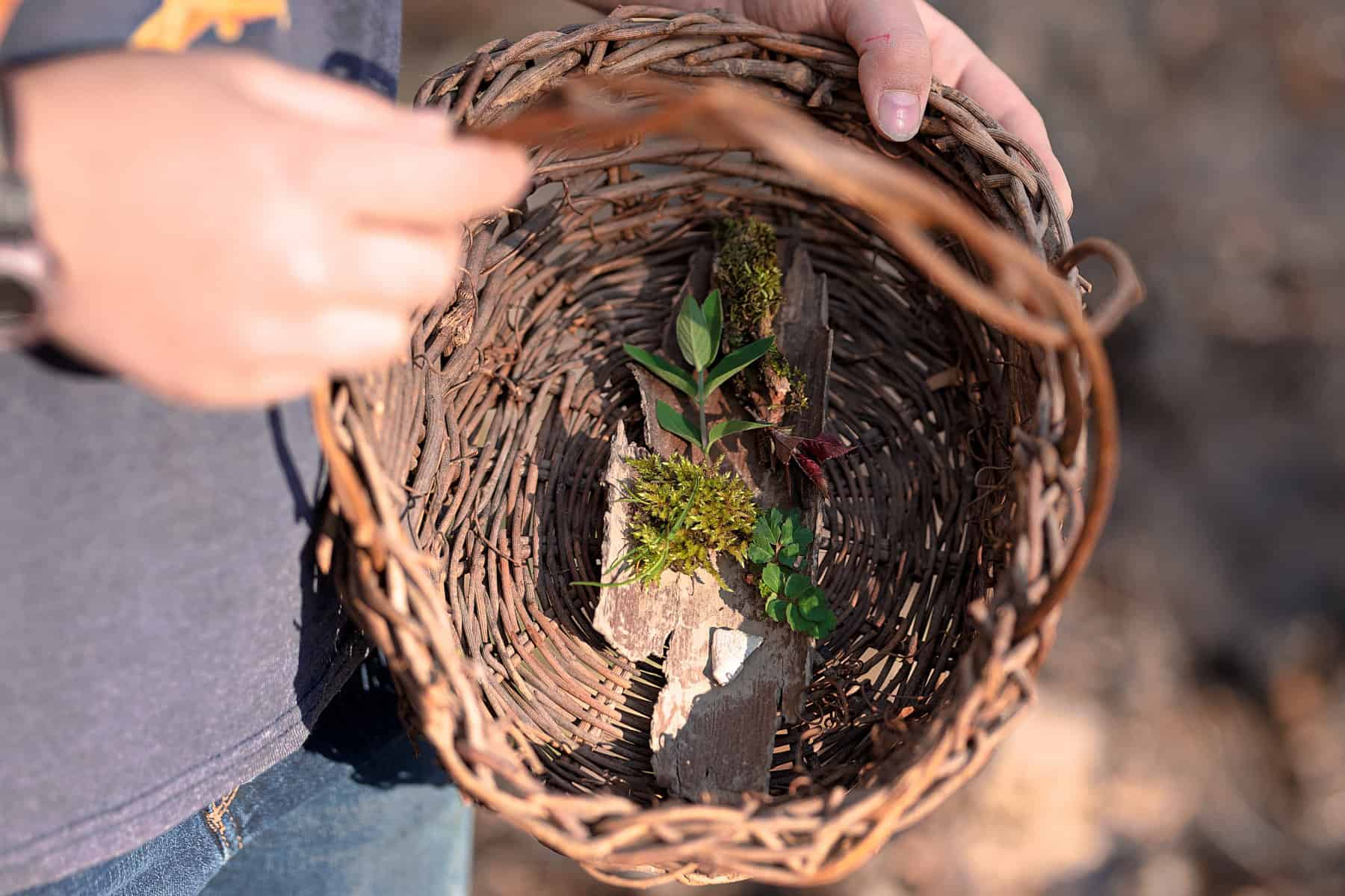
Collect some, leave for others
Although learning the concept to only take what you need (and leaving plenty for others and for nature) can be a struggle, it’s a great lesson for kids to learn to be respectful of the natural world and the different situations in which they explore it. One of the ways we’ve taught this is by using a simple concept from a children’s book called If Everybody Did. This book helps kids understand that maybe it’s okay for one kid to pick a flower, but what if everybody did? The sketched illustration shows a flower garden picked bare. In that simple way, it helps teach kids to consider that something which may not be wrong could be damaging if everyone did it. We use that concept a lot when teaching our kids to be careful with gathering nature. But, when you have permission and know you’re not going to damage the plants or diminish the beauty, it’s so much fun to collect nature specimens.
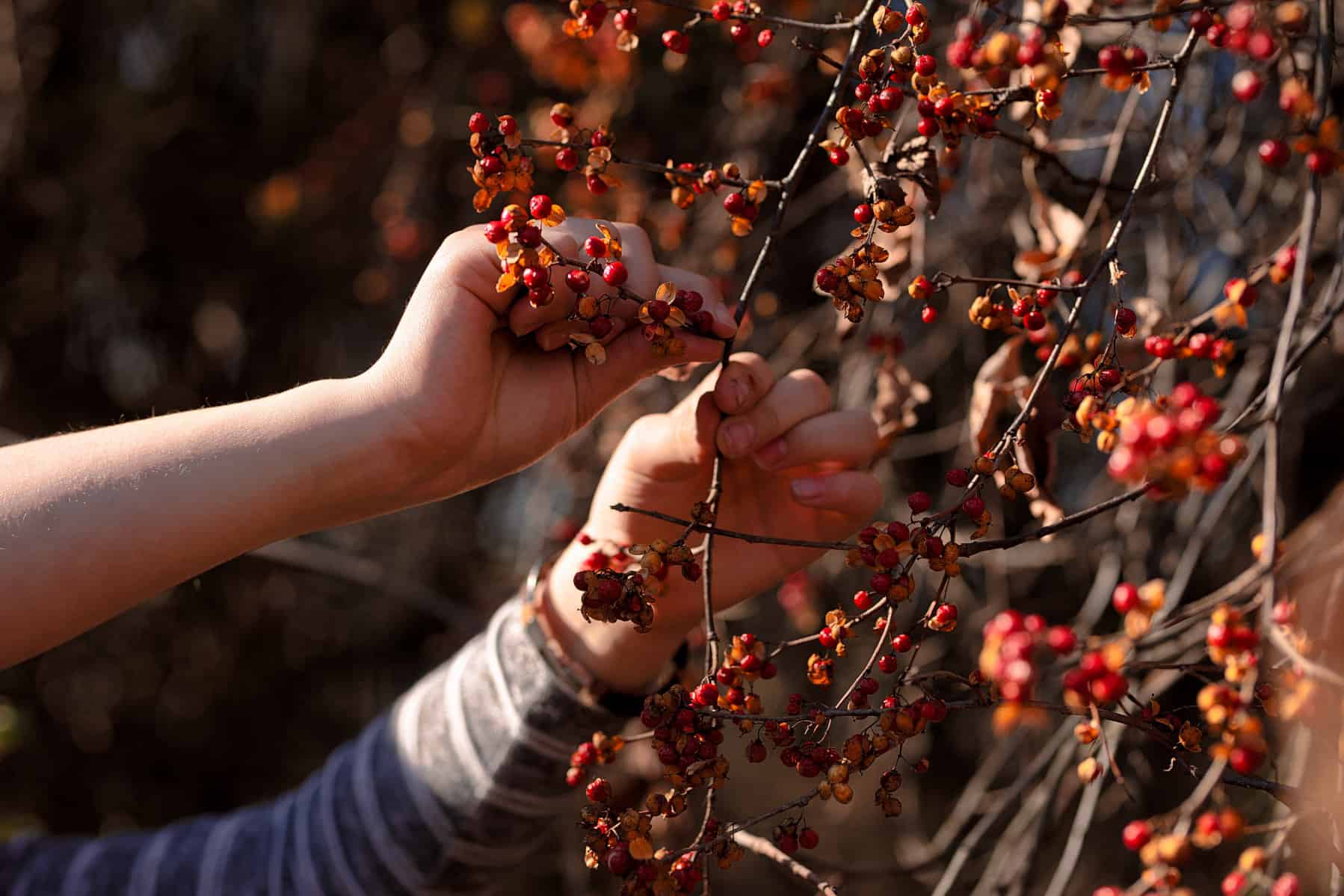
Tips for nature collecting
Nature collecting is a wonderful activity that allows children to engage with their surroundings, explore different ecosystems, and develop a deep appreciation for the natural world. Encourage your child’s curiosity and let them take the lead. Allow them to explore and collect items that catch their attention, even if they seem insignificant to you. Every discovery holds value in fostering their connection to nature. Offer guidance and teach your child to identify different plants, rocks, or other objects they encounter. Introduce them to guidebooks or smartphone apps that can help identify species and provide interesting facts about them (see below for more on this).
What to do with your nature finds
Once you’ve collected a few nature finds, what do you do with them? I recommend setting up a dedicated space in your home where your child can display their collected treasures and show them off! It could be a shelf, a table, or a shadow box. Encourage them to arrange and label their items, fostering a sense of ownership and pride in their collection. Encourage your child to document their nature collection adventures through drawings, photographs, or a nature journal. This helps them not only remember their experiences but also provides an opportunity for reflection and creativity.
My kids love to find unusual odds and ends to bring back for their fairy houses. You can also press leaves and flowers for later crafts. Depending on your kids’ ages and interests, you can also use nature guidebooks to identify and learn about the plants you find (see resources below). You can even study them with a magnifying glass or under a microscope.
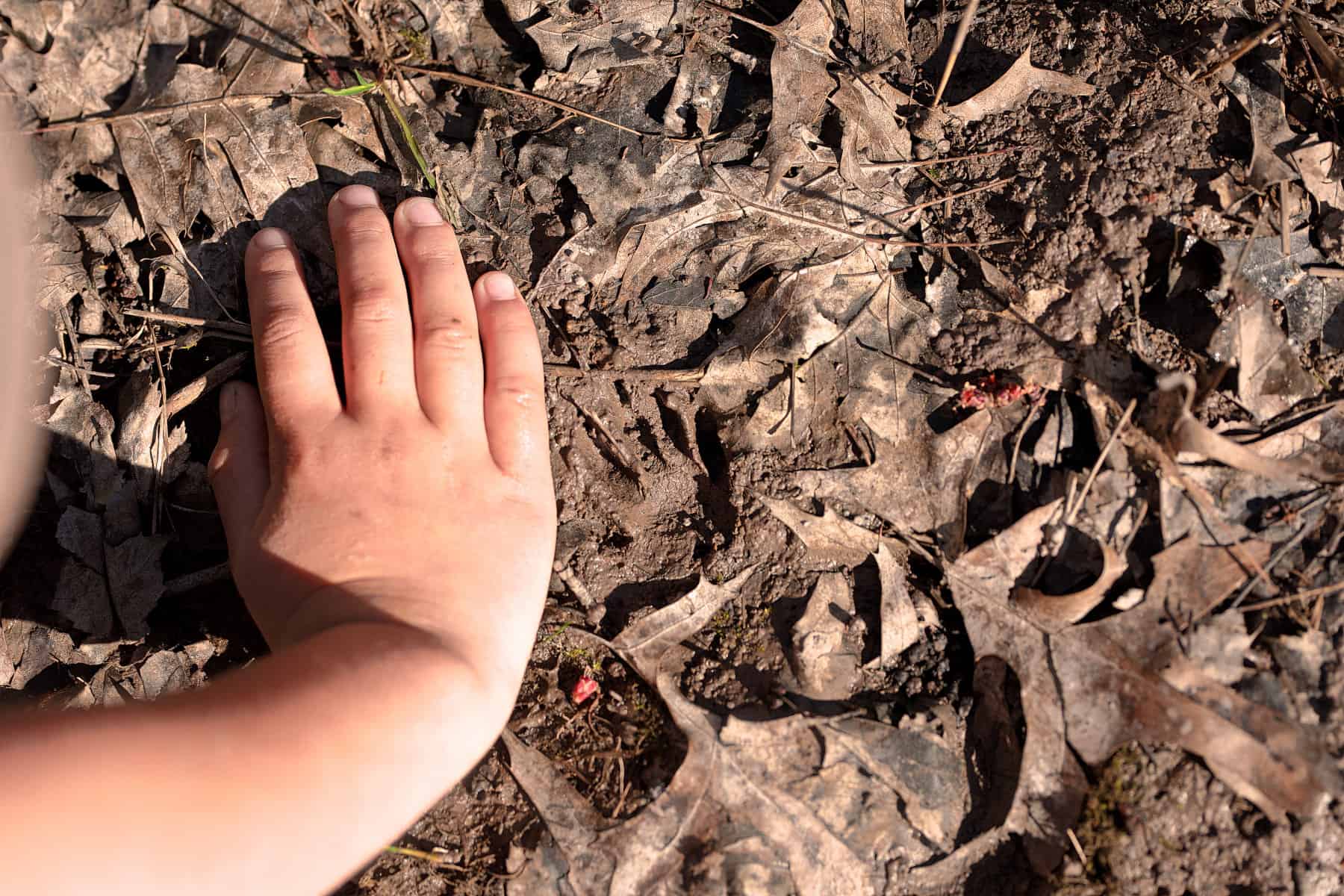
2. Finding animal tracks
Finding animal tracks is a great outdoor nature activity for kids of all ages. Even older kids enjoy the hunt for animal tracks! It’s fascinating to see what animals have been out in the woods, down by the water, or wearing paths across the meadow. I love to imagine what kinds of busyness was going on right in the same place I was standing, and the only sign of it is that simple track left behind.
Tips for finding animal tracks
Parks, nature reserves, or hiking trails are good options when looking for animal tracks. Look for areas near water sources or in quiet, undisturbed places where animal tracks are more likely to be visible. The best times to search for animal tracks are after a fresh snowfall or rainfall, when the ground is soft.
Before setting out, introduce your child to the concept of animal tracks. Explain how tracks are left behind by animals as they move, and how they can provide clues about the animal’s size, shape, and behavior.
Searching for tracks helps children to be observant and to understand the habits of different kinds of animals. Encourage your child to observe their surroundings closely. Look for tracks near water sources, along paths, or near trees. Point out other signs of animal activity, such as chewed plants, feathers, or droppings. Use the tracks as a starting point for discussing animal behavior and survival strategies. Talk about how different animals move, what they eat, and where they might live. Encourage your child to imagine the story behind the tracks they find.
For example, you can usually find raccoon tracks near water because raccoons like to wash their food and their paws. Many animals like to follow the same path day by day, perhaps headed to a water source or cutting across a grassy area.
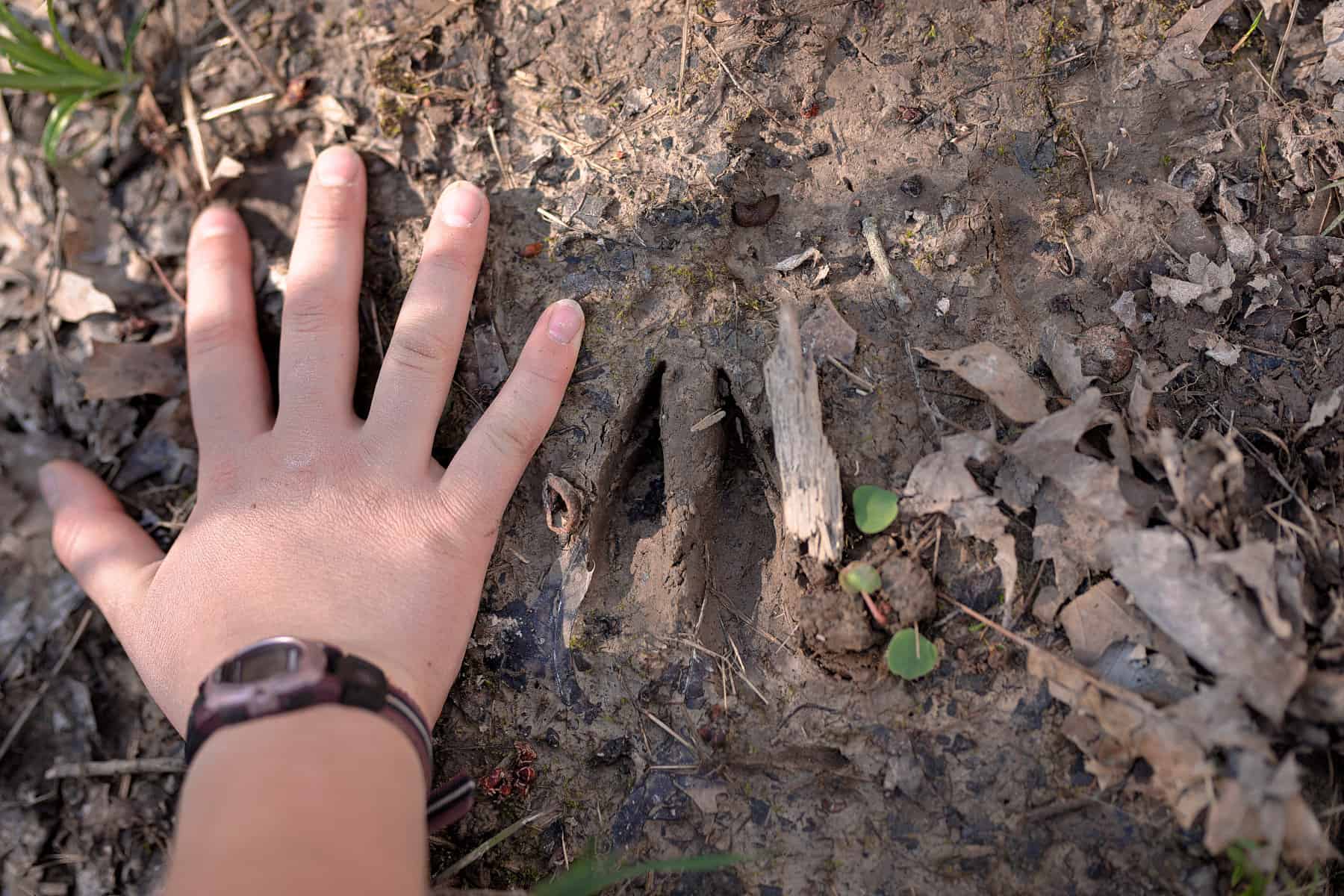
How to preserve your finds
If your kids are really into finding and studying animal tracks, use a camera or a smartphone to capture images of the tracks you discover. If the conditions are suitable, make imprints of the tracks using plaster of paris or a similar material. Use the package directions to mix it up, pour it into your track(s), and let it harden. (Make sure it’s not going to rain soon!) When it has completely cured, gently lift it out of the track, brush off any dirt or light debris that may have stuck to it, and you’ll have a casting of that animal track to keep.
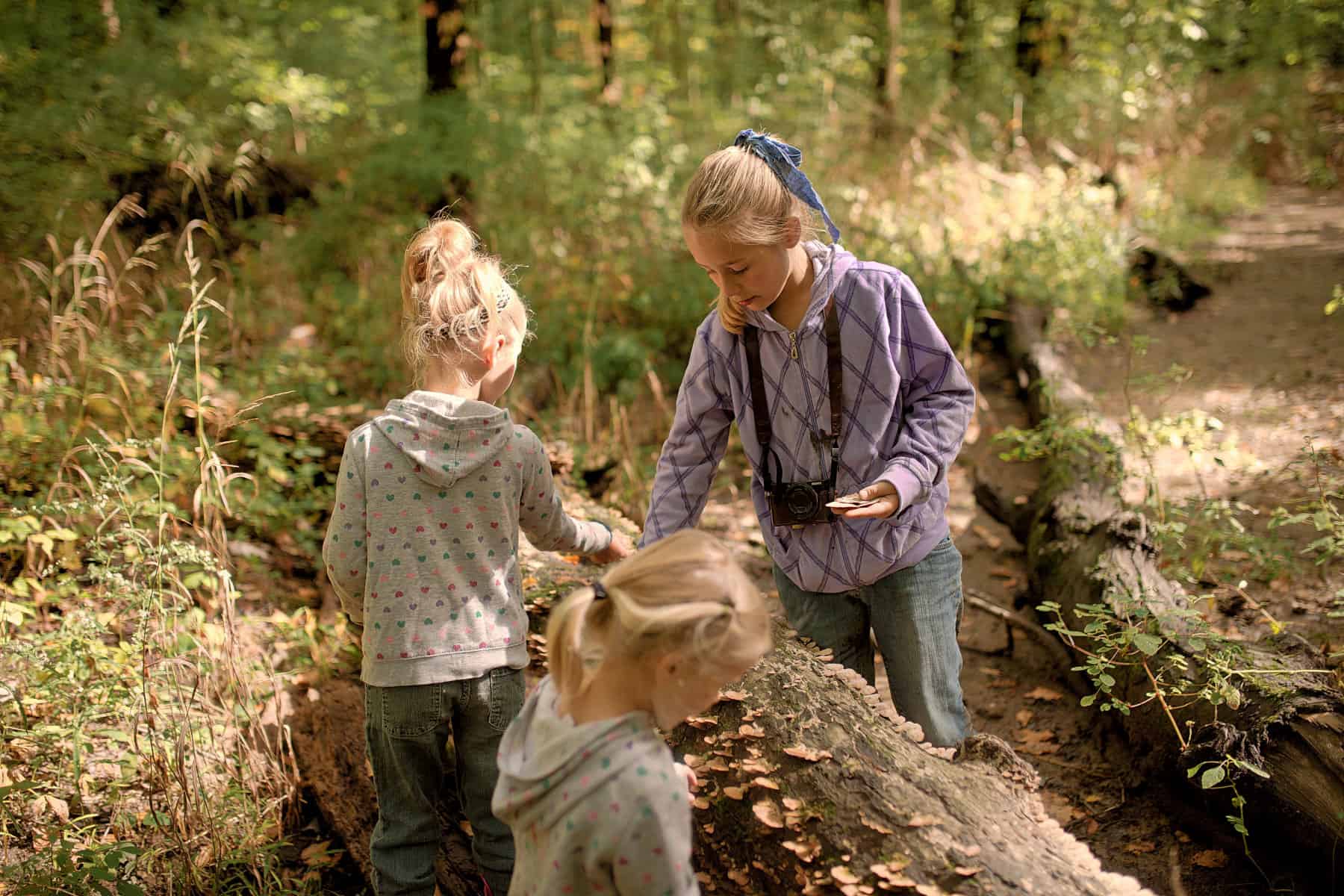
3. Nature scavenger hunt
A nature scavenger hunt is an easy and fun outdoor nature activity for kids. A scavenger hunt gives a readily attainable purpose and direction to outdoor time. Kids love having a list and being able to check items off it.
Whether you’re going on a hike and want to keep kids engaged, or just want to keep your little ones busy outside for a while, a printable scavenger hunt is a great activity. You don’t even have to find or make one yourself! One of our Creative Team moms recently created a bundle of the best FREE nature scavenger hunts for kids. Click over to her article to get an email with this great bundle of printables to enjoy with your kids.
Tips for nature scavenger hunts
Planning a nature scavenger hunt for kids can be a thrilling and engaging activity that encourages exploration and discovery. Start by selecting a theme for your nature scavenger hunt that aligns with your child’s age/interests, and your location. It could be focused on specific colors, types of plants/animals, or elements in your area. A theme adds an element of intrigue and purpose to the hunt. Our FREE nature scavenger hunt bundle includes 20+ themed printable scavenger hunts.
Define the boundaries of the scavenger hunt area to ensure your children stay safe. It could be your backyard, a nearby park, or a designated nature trail. Discuss the boundaries with them and make sure they understand where they can and cannot go. Create a sense of excitement and motivation by offering small incentives or rewards for completing the scavenger hunt. It could be a special treat, a small prize, or even a certificate of achievement. Celebrate their accomplishments and make it a memorable experience.
Your enthusiasm and excitement about the scavenger hunt will rub off on your children. Show genuine curiosity and interest in their findings, and celebrate each discovery along the way. Your positive energy will make the adventure even more enjoyable for them. By following these tips, you can create a captivating nature scavenger hunt that sparks your children’s curiosity, encourages exploration, and fosters a love for the natural world. It’s an opportunity for them to engage with their surroundings, learn about the environment, and create lasting memories.
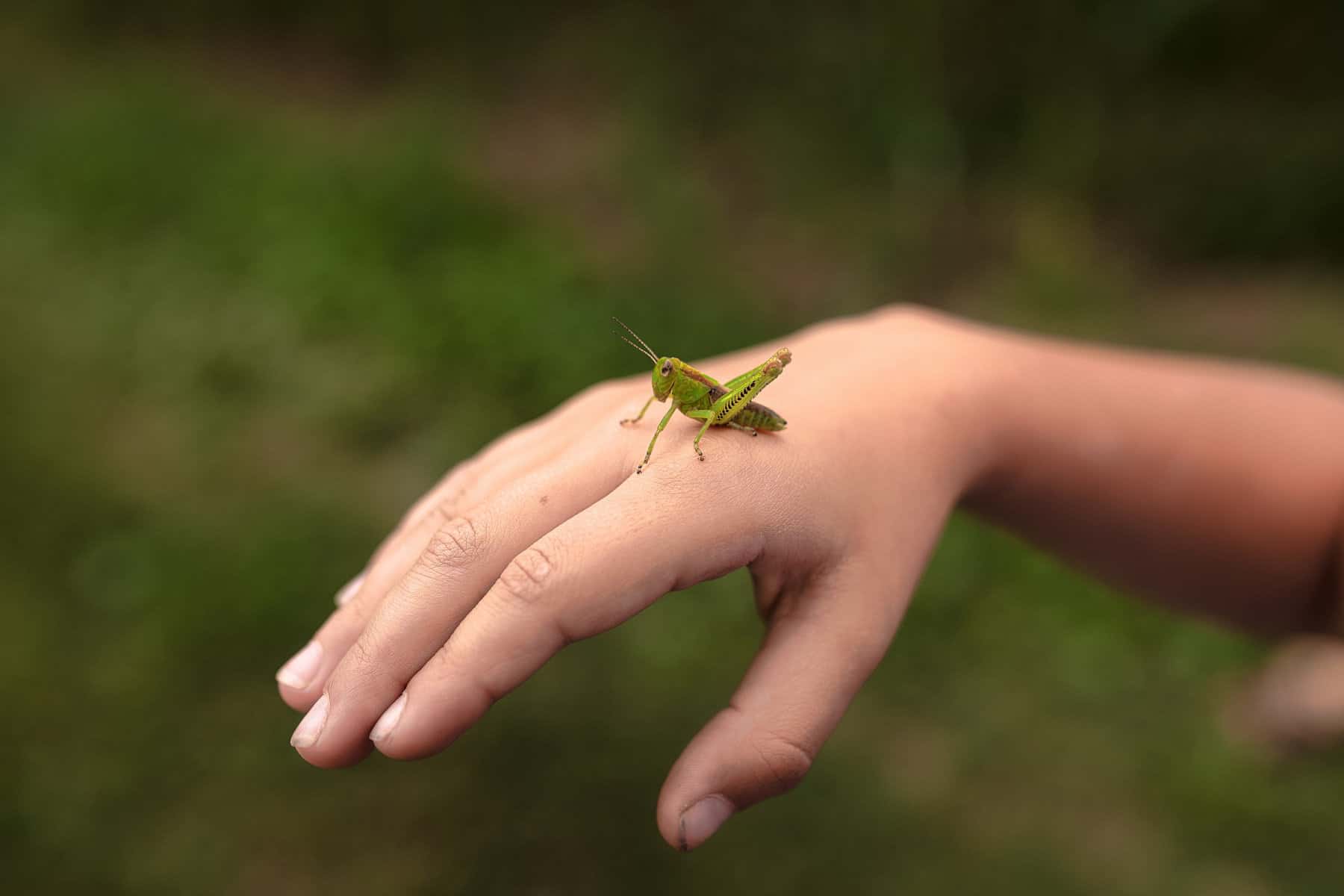
4. Exploring nature with guidebooks and field guides
Exploring nature with guidebooks and field guides can be a fantastic way to enhance your child’s outdoor experiences and deepen their knowledge about the natural world. Nature guidebooks and field guides are some of our favorite resources when we’re enjoying nature activities of all kinds. We’re constantly encountering flowers, trees, birds, insects, and so much more. Although we know many of the common ones in our area, we often find things we can’t identify.
Tips for using guidebooks and field guides with kids
Be sure to choose age-appropriate guides for your kids. Select guidebooks and field guides that are suitable for your child’s age and reading level. Look for guides with clear and concise information, engaging visuals, and easy-to-understand descriptions. Consider guides that are specifically designed for children or have a beginner-friendly approach. Take some time to read through the guides beforehand so that you are familiar with the content and layout. This will allow you to guide your child effectively and help answer their questions as they explore nature.
Begin your explorations with plants and animals that are commonly found in your local area. This makes it easier to identify and connect with the species you encounter. As your child’s interest grows, you can expand your exploration to other regions and habitats. Encourage your child to actively participate in using the guidebook. Let them take the lead in identifying and describing the species you encounter. Ask open-ended questions to stimulate their curiosity and engage them in the process.
Favorite nature guidebooks and field guides
Early on in our outdoor adventuring, I started encouraging my kids to use nature guides to help us learn more about the wonderful outdoors together. Here are some of our favorite nature guidebooks to help you with your own nature exploration!
Birds:
- National Geographic Kids Bird Guide of North America
- The Little Book of Backyard Bird Songs
- Peterson Field Guide To Birds Of Eastern & Central North America
Flowers and Trees:
- Wildflowers (National Geographic: My First Pocket Guide)
- Trees, Leaves & Bark
- National Geographic Pocket Guide to Trees and Shrubs of North America
Creatures:
- Smithsonian Handbooks: Butterflies and Moths
- National Geographic Pocket Guide to Insects of North America
- Frogs, Toads, and Turtles
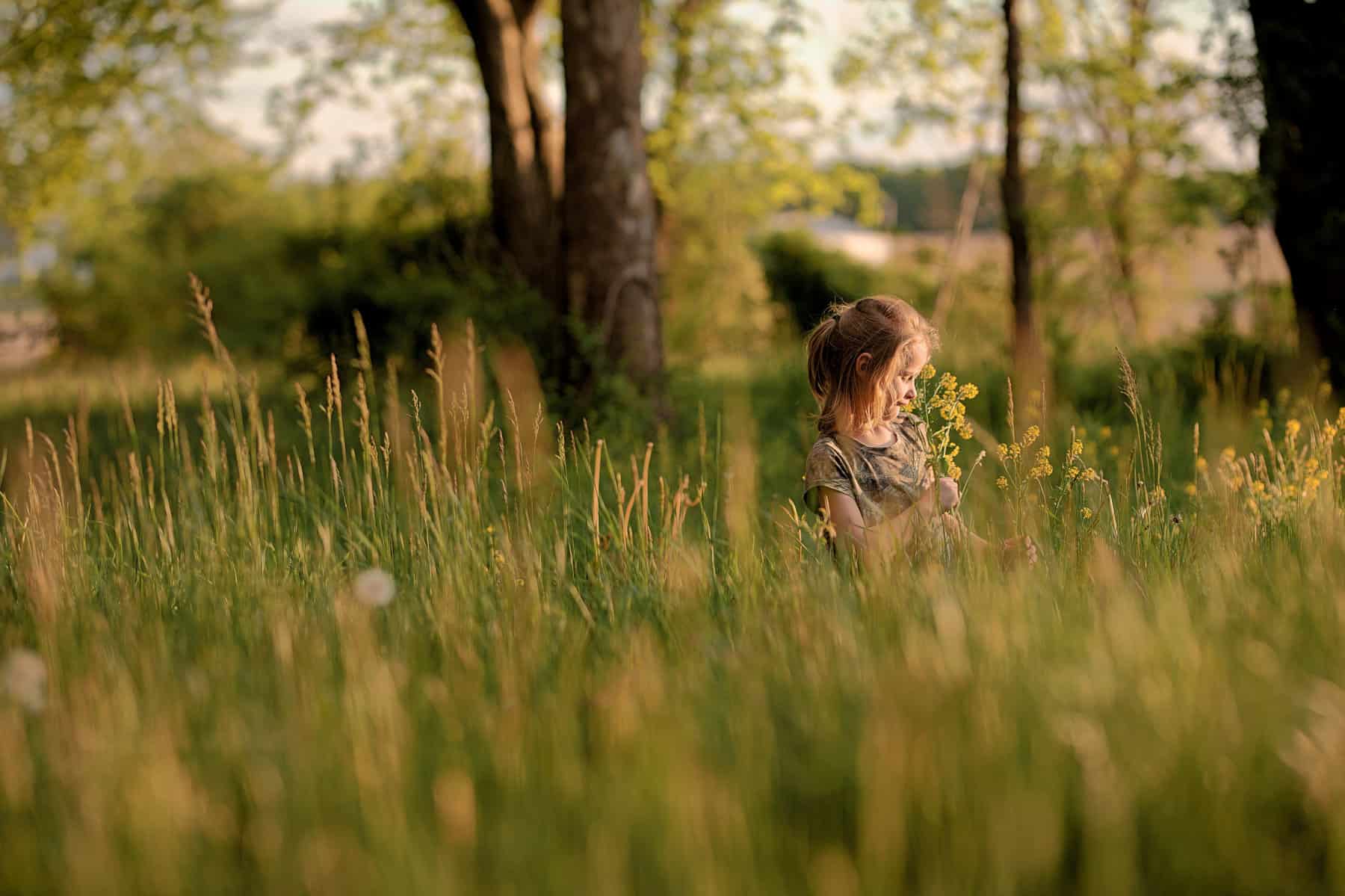
5. Nature sensory play
Nature is the ultimate sensory experience. Wherever you are, whatever the weather, whatever ages your children are, nature provides a feast for the senses. All you need for this activity is a few minutes in the great outdoors! Providing nature sensory play experiences for kids can be a wonderful way to engage their senses, spark their imagination, and deepen their connection with the natural world.
Tips for nature sensory play experiences
First, find a peaceful place where you can settle down and be surrounded by nature. It could be a local park, a forest, your own backyard, or an open meadow. Then sit down and get everyone comfortable and quiet. Explain that you’re going to use your senses to explore nature. Encourage hands-on exploration and full-body sensory experiences. Allow your child to freely touch, feel, and interact with the natural materials. Let them dig their hands into the soil, splash in puddles, or play with leaves. Sensory play in nature encourages a tactile connection and stimulates their senses in a way that indoor play cannot replicate.
Go beyond touch and incorporate activities that engage all the senses (see below for ideas on each of the senses). This multi-sensory experience deepens their engagement and enriches their understanding of the natural world. Sensory play in nature stimulates cognitive skills such as problem-solving, critical thinking, and creativity. It enhances their ability to make connections, observe patterns, and explore cause-and-effect relationships. Sensory experiences outdoors also foster a deep connection with the natural world. It helps children develop an appreciation for the environment, encourages a sense of stewardship, and nurtures a lifelong love for nature.
The beauty of this nature activity is how simple it is, and yet how even young kids can take it with them. Once you help open their senses to noticing the natural world around them, they will live richer and fuller lives, appreciating the beauty that surrounds them.
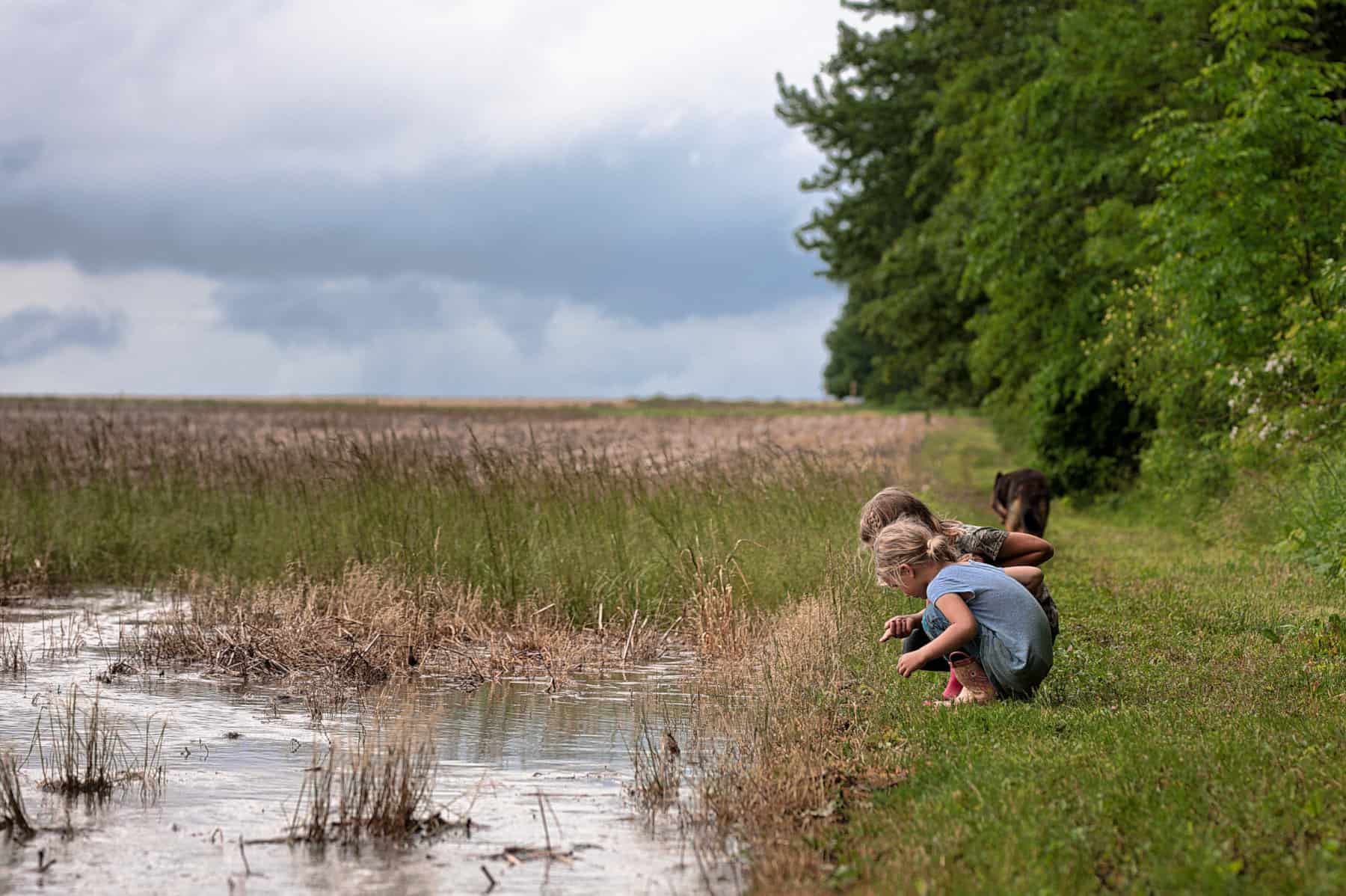
Using all your senses
Sight
Look around you. Have the kids make a list of every natural thing they see. Trees, grass, rocks, clouds, birds—everything counts! You can write these down if you want to, or just list them out loud together. Once you’ve noticed all the obvious things, keep looking. What about that ant crawling across your big toe? That tiny flower peeking out from under the clover leaves? The bird nest almost hidden in the tree branches above?
Or, maybe you could go on a color scavenger hunt, searching for objects of different colors in nature. Observe the vibrant hues of flowers, leaves, or insects. Look for patterns in tree bark or animal markings. Use binoculars or magnifying glasses to observe details from a distance. The more you look, the more you see! Nature becomes more exciting the longer you focus on it.
Touch
Encourage your kids to touch things around them, noting the different temperatures and textures nature offers. From the rough bark of a maple tree to the silky smoothness of a blade of grass, the world around us is full of everyday nature that becomes extraordinary when you stop to consider it. Allow your kids to play with mud, sand, or clay, and explore its malleability and consistency. Let kids use their hands to explore the temperature and texture of water in a stream or puddle. Find objects with varying textures, such as rough bark, soft moss, or smooth pebbles.
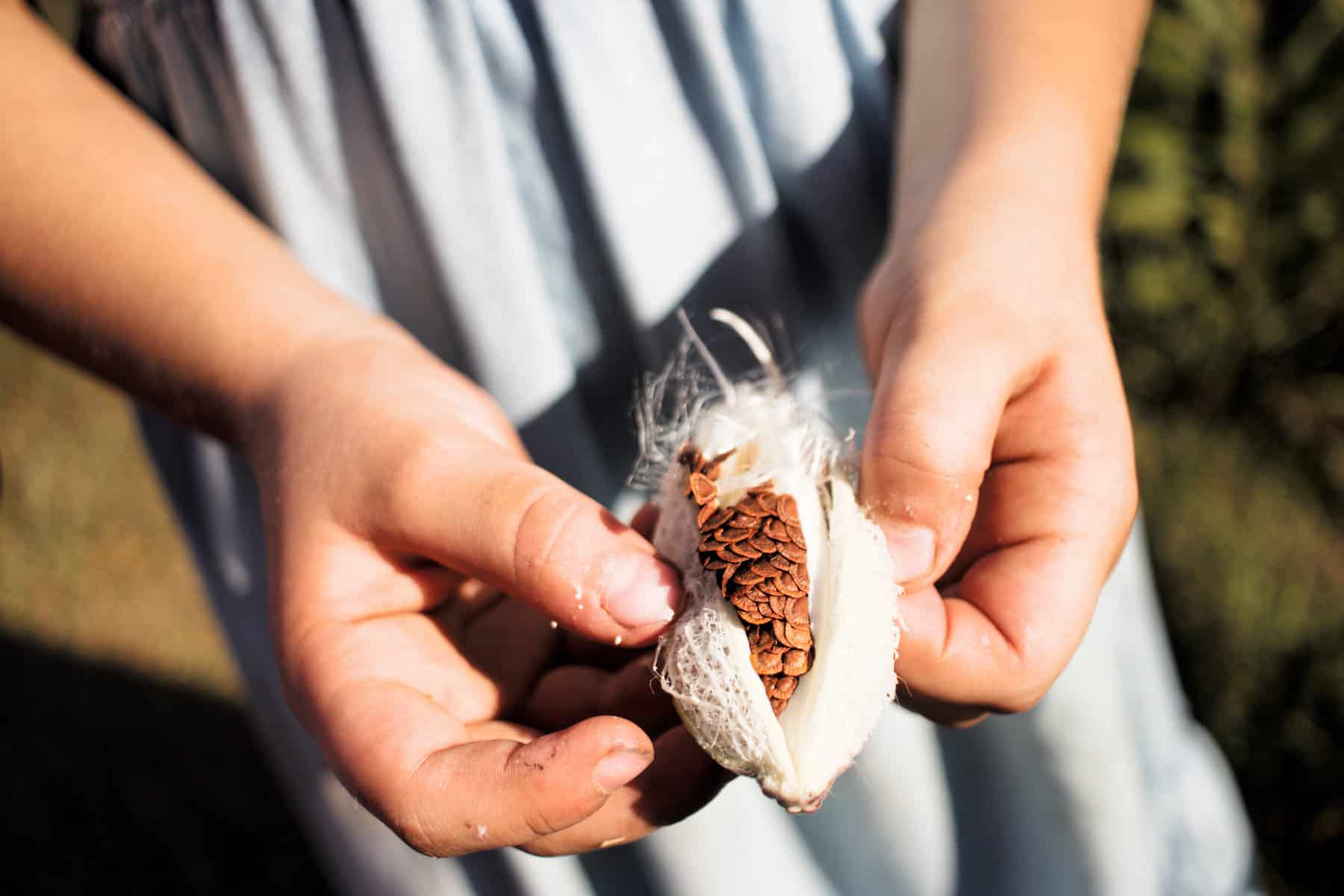
Hearing
Close your eyes for this one. Lie down on your back and simply focus for a bit on how nature surrounds you, even when you can’t see it. What do you hear? (It’s perfectly fine if you have sounds of traffic and people, too. Very few of us can often get to a place where we can hear nothing but nature!)
Listen for the wind rushing through the leaves, the bee buzzing at the flowers, the birds calling, or water rushing. Identify different bird calls and try to mimic them. Play a “Sound Guessing Game” where you close your eyes and listen to identify the source of various sounds. Nature’s song fills our ears when we stop to listen.
Smell
This is also a great one to do with the eyes closed! Start concentrating on the scents all around you. Talk about them and have the kids see if they can guess what they are. The aroma of cut grass, the perfume of a flower, the damp dirt of the woods or the rich smell of fallen leaves—all of these smells fill our senses with the delight of nature. Smell herbs or leaves and try to guess their identity. Find flowers with different fragrances and compare their scents. Look for areas with distinct natural smells, such as a pine forest or a seaside.
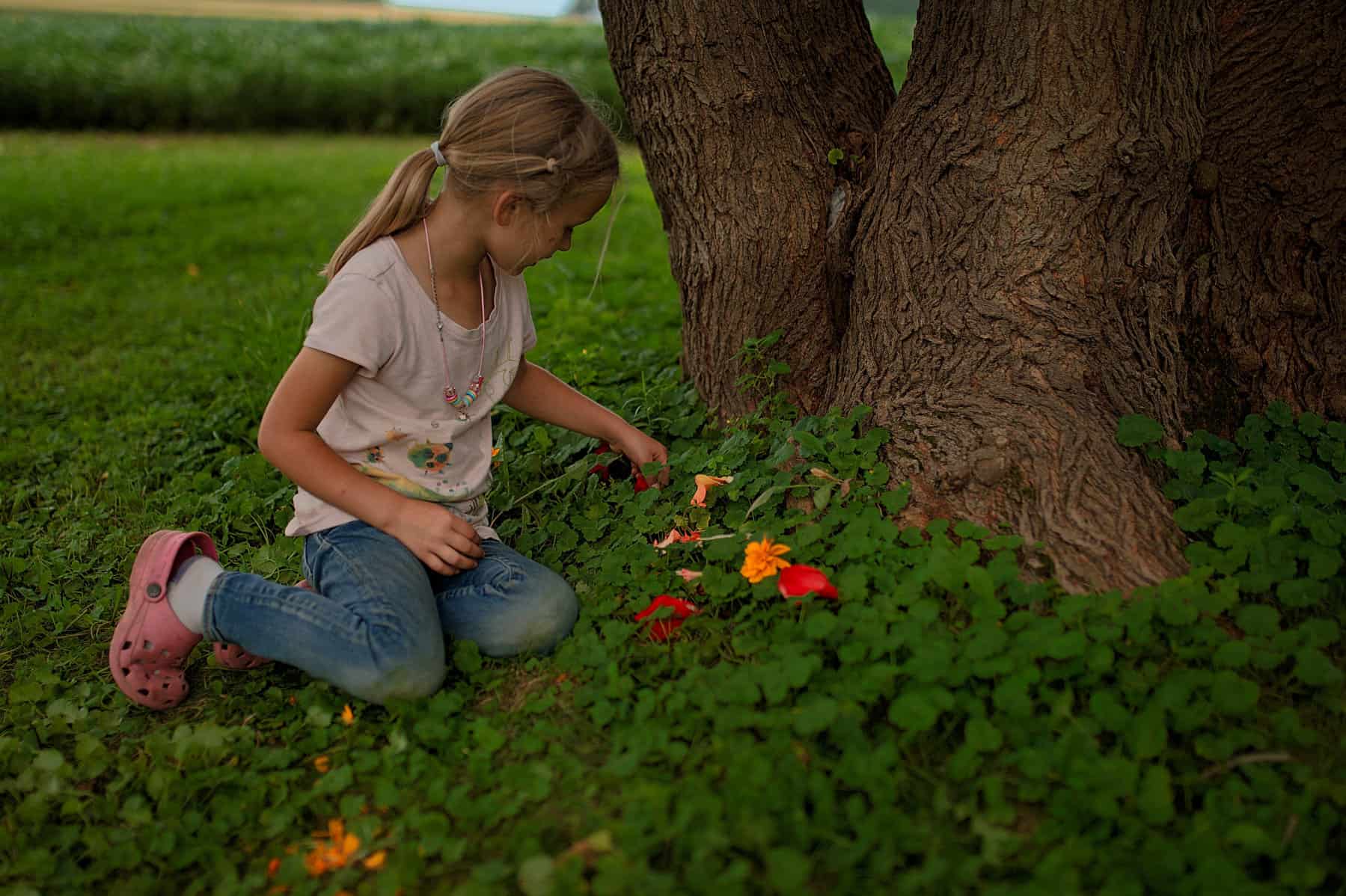
6. Imaginary nature play
Engaging in imaginary nature play allows children to unleash their creativity, explore their imagination, and deepen their connection with the natural world. By providing the space, materials, and support, parents can nurture their child’s imagination and help them build a deep connection with nature.
Tips for encouraging imaginary nature play
Start by providing your child with open-ended materials to play with. Offer a variety of natural materials, such as sticks, leaves, rocks, and flowers, that can be used as props for imaginative play. These materials can transform into anything their imagination desires, from magic wands to fairy houses or animal habitats. Prompt your child to create stories or narratives around their imaginary play. Encourage them to describe the characters, settings, and adventures they envision. This helps develop their language skills and fosters creativity.
Join in the imaginary play as a playmate or facilitator. Take on different roles, engage in dialogue, and let your child take the lead. This strengthens the parent-child bond and encourages collaborative play. Help your child develop a sense of wonder and curiosity about nature. Point out interesting aspects of the environment, such as unusual tree formations, animal tracks, or unique plant species. This sparks their imagination and provides inspiration for their imaginary play.
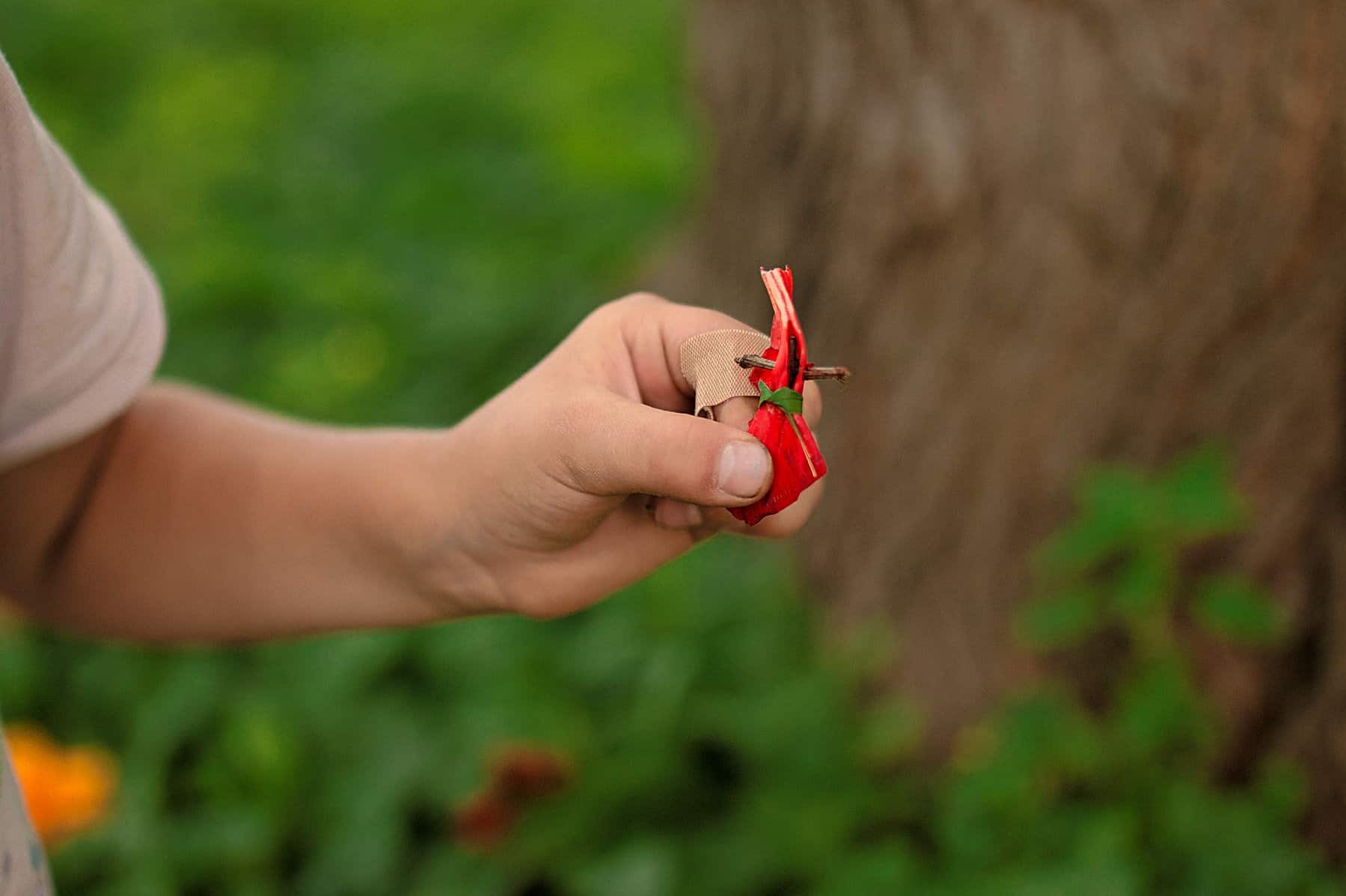
Nature fairy houses
Creating fairy houses, fairy dolls, and flower/leaf crafts are my all-time favorite imagination-heavy nature activities for kids. Growing up, I often headed out to the woods and built tiny houses out of natural materials. I loved furnishing them and playing with my imaginary characters in them.
I taught my oldest daughter how to get started making fairy houses when she was just a toddler. Now all three of my girls will spend hours with some sticks and nuts and flowers, creating imaginary worlds at the base of a tree. They will transform flowers into dolls and weave leaves into baskets. Flat stones become furniture, and nuts become bowls and food. There is no limit to what you can create with a few natural materials and imagination.
Just this morning, my daughter went to play with some friends, and when I asked her what they did, she replied that all four of them worked together to build an elaborate fairy house. Using materials found in nature, kids can put their imaginations to work and create a magical world out of sticks, stones, bark, and flowers. We’ve got an entire post about building fairy houses and gardens, so head over there for more details on this favorite nature activity.
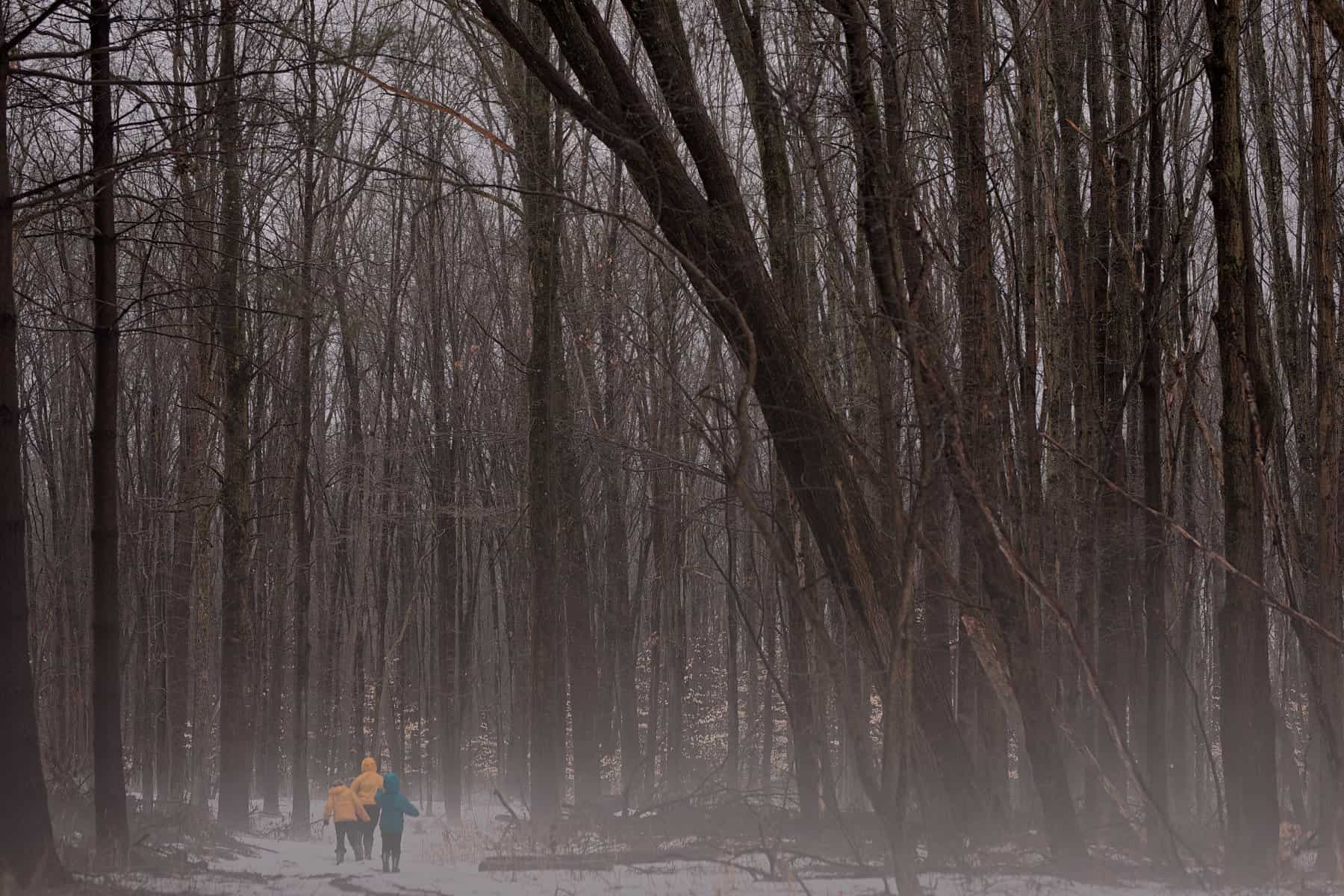
7. Nature sit spot
Engaging in a nature sit spot with your child is a wonderful way to encourage mindfulness, observation skills, and a deeper connection with the natural world. The goal of this nature activity for kids is to observe and record the changes and growth of a nature area—and your own children—for an entire year. It’s a great way to help kids see the rhythms of the natural world right outside their windows.
Sometimes we get so busy with life that we miss the subtle changes of nature through the seasons, and only notice the super dramatic ones, like when the flowers bloom, the leaves fall, or the snow comes down. But intertwined throughout those major events in nature are dozens of minor shifts throughout the seasons.
In the same way, our children are growing right under our eyes. Sometimes it happens so slowly that we hardly realize it, but when we consistently photograph them in the same location over the course of a year, we see those changes recorded. As the seasons change, so do our children. This activity is a unique way to appreciate growth and changes, both in nature and in our families.
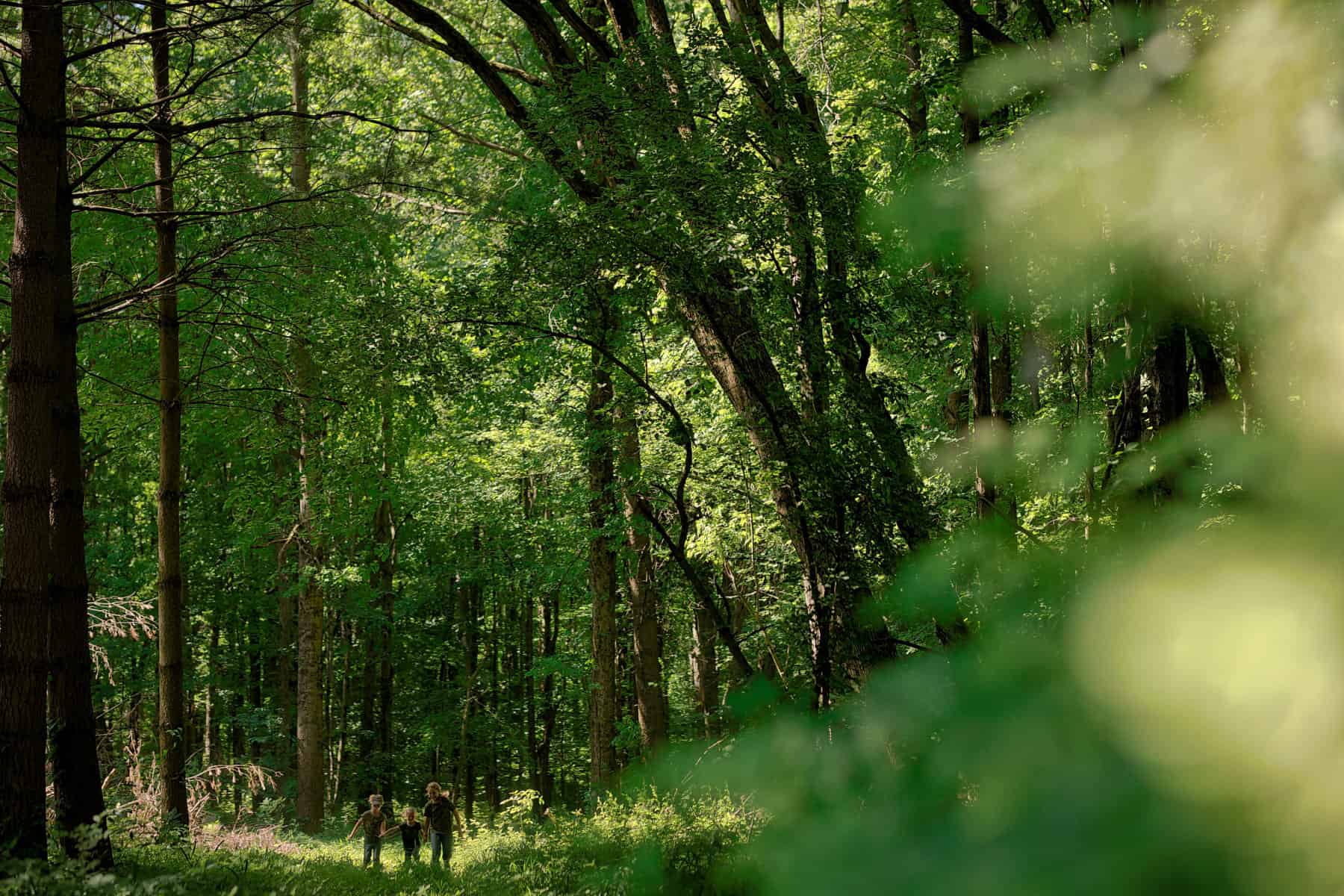
Tips for choosing a nature sit spot
To get started, get your kids outside and pick out a spot to observe throughout the seasons. Make it close to home so it’s easy to see and record. It could be your yard just outside your living room window, a tree you pass every day on the way to the bus stop, or a favorite area at a local park. Make it convenient so you’ll be sure to keep up with its changes throughout the year.
Ideally, your seasonal sit spot will include a deciduous tree that will provide a lot of interesting changes to observe throughout the year and maybe some perennial flowers that will come up out of nowhere, bloom, and die back in the fall. I mean, you could pick a big rock for your seasonal spot, but it might not show a lot of changes! You’d probably see the grass grow around it, some trees change in the background somewhere, and maybe you’d get snow on it eventually…but you get the point.
Try to pick somewhere that will be interesting to watch the seasons change. Even more importantly, pick someplace significant to your kids where they will enjoy watching the changes.
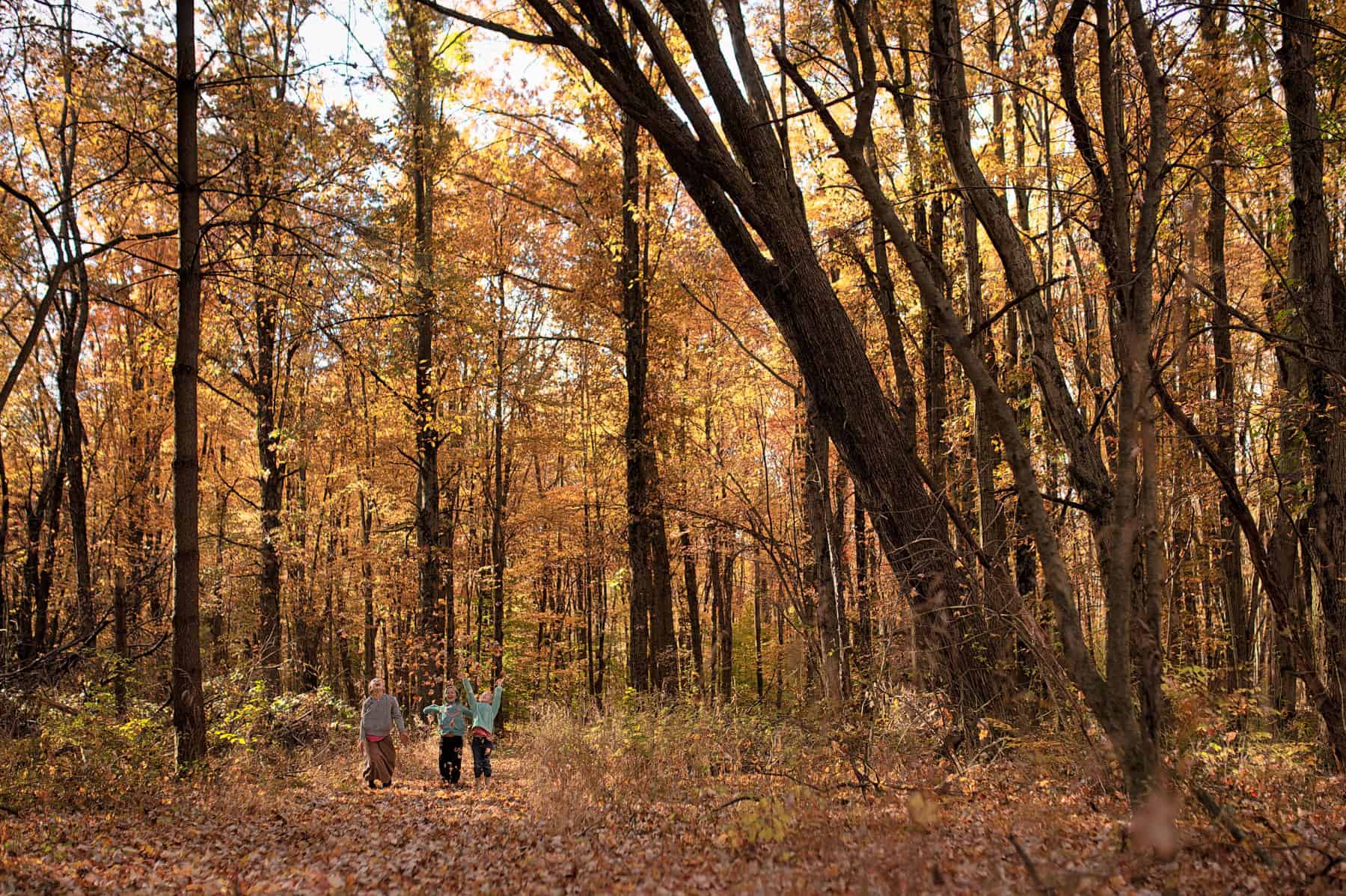
Photographing your nature spot
Once you’ve picked your spot for the year, take a picture of it with your kids in the frame somewhere. This does not have to be a photography project or a posed picture (but you could do that too – here’s how to do a seasonal spot photography project)! Just let them play in the dirt, climb the tree, or flop down in the grass. The point is just to record what your spot—and your kids—looked like at that moment in time.
It’s up to you how often you photograph your nature spot. Weekly might be too often to keep up with all year, but you could do it that often if you wanted to. I think monthly is a great goal! It’s pretty neat to look back over photos taken once a month in the same spot for an entire year. This year I’m photographing our favorite climbing tree on the edge of our property, and I can’t wait to see all the little changes throughout the year!
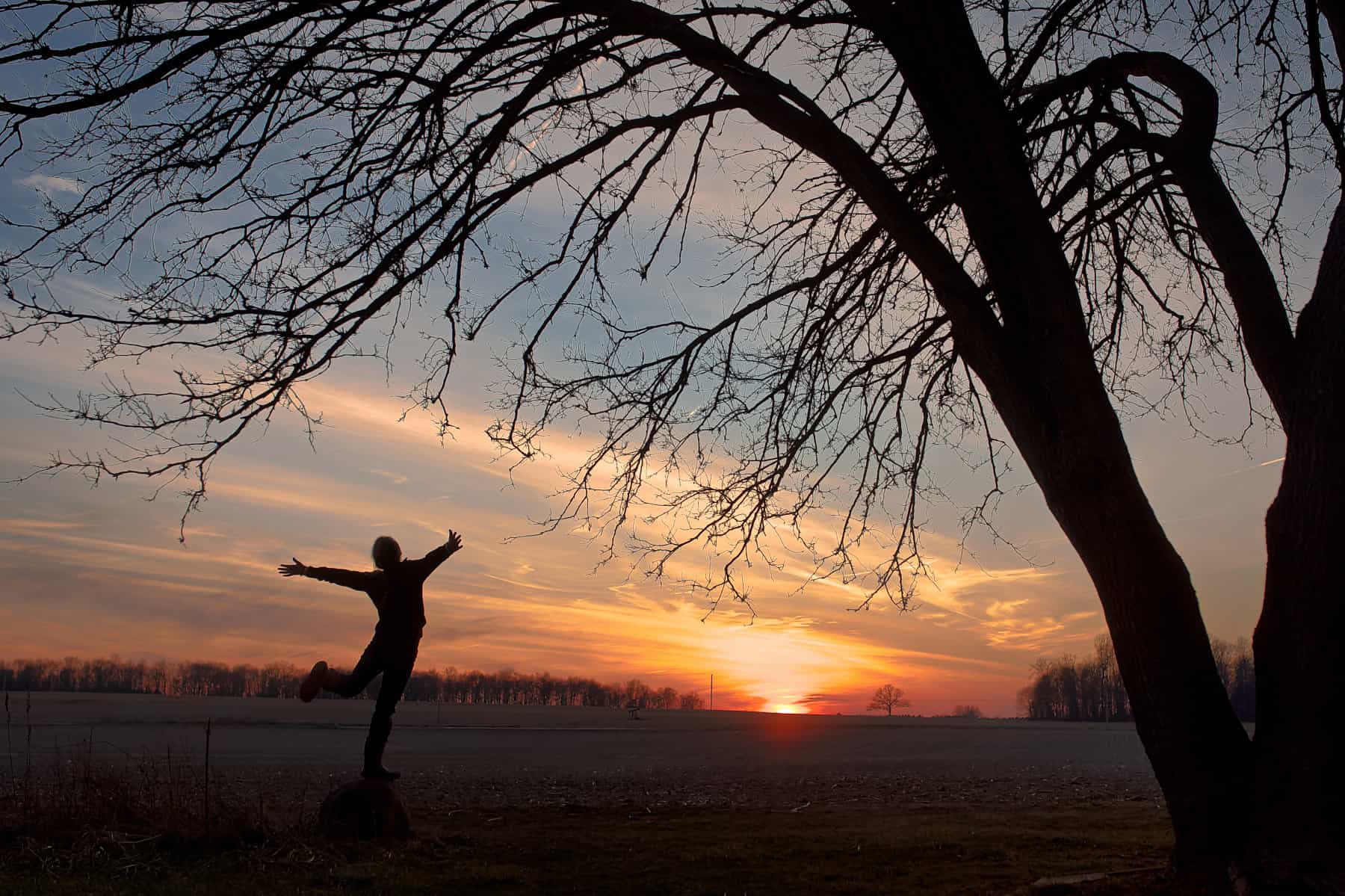
Tips for having a seasonal sit spot with kids
Explain to your child that the purpose of the sit spot is to observe and connect with nature. Encourage them to be present in the moment, open their senses, and pay attention to the details of their surroundings. Find a comfortable sitting position and invite your child to join you. Encourage them to sit quietly and still, allowing themselves to blend into the environment. Explain that this stillness helps wildlife feel more comfortable and encourages their natural behaviors.
Guide your child to observe their surroundings with all their senses. Encourage them to notice the sounds, smells, textures, and colors around them. Help them discover the beauty in the small details, like insects, birds, or patterns in tree bark. After spending some time observing, invite your child to share their thoughts, feelings, or any interesting discoveries they made during the sit spot. Encourage them to reflect on the interconnectedness of nature and their own place within it.
Start with shorter sit spot sessions, especially for younger children, and gradually increase the duration as they become more comfortable with the practice. This helps them develop patience and the ability to be present in the moment. Encourage your child to experience the sit spot in different weather conditions. Whether it’s sunny, rainy, or snowy, each weather presents unique opportunities for observation and connection with nature.
Incorporate the sit spot into your routine as a regular activity. Schedule specific times to revisit the sit spot with your child, whether it’s once a week or once a month. Consistency helps deepen their connection with nature and cultivates a sense of stewardship.
What are your favorite outdoor activities?
Have you tried any of the ones in this article?

About the author
Leslie is an Ohio farm girl and chaser of light, children, and sometimes chickens. She’s a lover of Jesus, wife to her high school sweetheart, and a homeschooling mom of four wild rascals who love the great outdoors as much as she does. As a family, they love hiking, camping, fishing, and just about any outdoor activity. She and her husband are just beginning the process of building a homestead from the ground up, doing most of the work themselves. Leslie has a lifelong obsession with writing and capturing everyday life from behind the lens. Follow along with their homesteading, homeschooling, and everyday adventures on her Instagram account.
You can find more from Leslie in the following locations:
Instagram: @c_l_allofus
Leslie’s RWMC posts: Leslie Alvis








1 comments